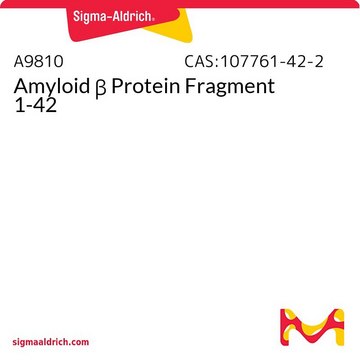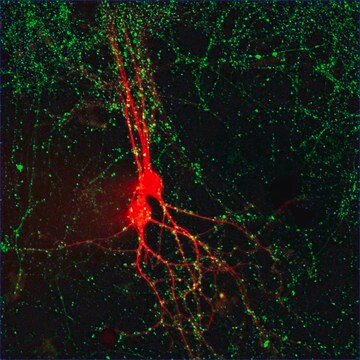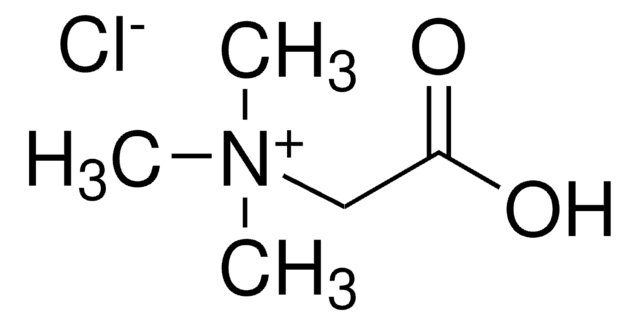推薦產品
化驗
≥95% (HPLC)
形狀
lyophilized
成份
Peptide Content, ≥45%
儲存條件
protect from light
儲存溫度
−20°C
Amino Acid Sequence
His-His-Gln-Lys
應用
Amyloid β (Aβ) refers to peptides derived from Amyloid precursor protein that vary in length from 36-43 amino acids. Aβ(s) peptides, their peptide fragments and mutated fragments are used to study a wide range of metabolic and regulatory functions including activation of kinases, regulation of cholesterol transport, function as a transcription factor, and regulators of inflammation. Aβ(s) peptides and their peptide fragments are also used to study oxidative stress, metal binding and mechanisms of protein cross-linking in the context of diseases such as Alzheimer′s disease and neurodegeneration. HHQK is a studied as a unique target site for inhibition of amyloid fibril formation and proteoglycan binding.
儲存類別代碼
11 - Combustible Solids
閃點(°F)
Not applicable
閃點(°C)
Not applicable
Toshio Ariga et al.
Journal of neuroscience research, 88(11), 2303-2315 (2010-07-14)
The extracellular accumulation of amyloid beta proteins (Abetas) in neuritic plaques is one of the hallmarks of Alzheimer's disease (AD). The binding of Abetas to extracellular membranes (ECMs) is a critical step in developing AD. Abetas bind to many biomolecules
J McLaurin et al.
European journal of biochemistry, 267(21), 6353-6361 (2000-10-13)
One of the major clinical features of Alzheimer's disease is the presence of extracellular amyloid plaques that are associated with glycosaminoglycan-containing proteoglycans. It has been proposed that proteoglycans and glycosaminoglycans facilitate amyloid fibril formation and/or stabilize these aggregates. Characterization of
D Giulian et al.
The Journal of biological chemistry, 273(45), 29719-29726 (1998-10-29)
The beta-amyloid peptide 1-42 (Abeta1-42), a major component of neuritic and core plaques found in Alzheimer's disease, activates microglia to kill neurons. Selective modifications of amino acids near the N terminus of Abeta showed that residues 13-16, the HHQK domain
我們的科學家團隊在所有研究領域都有豐富的經驗,包括生命科學、材料科學、化學合成、色譜、分析等.
聯絡技術服務


![[Ala28]-淀粉样蛋白β 25-35 ≥95% (HPLC)](/deepweb/assets/sigmaaldrich/product/images/306/938/dd9f7c72-cfca-4ea3-8e10-a7a2a7994639/640/dd9f7c72-cfca-4ea3-8e10-a7a2a7994639.jpg)




